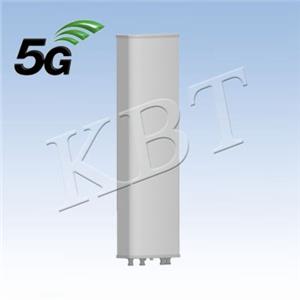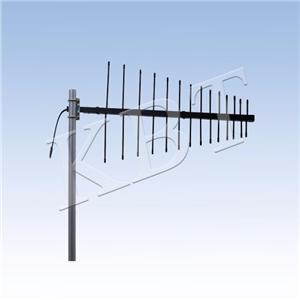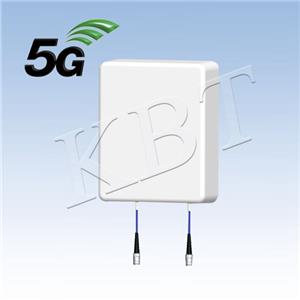What is an outdoor omnidirectional antenna?
What is an outdoor omnidirectional antenna?
Outdoor omnidirectional antennas are omnidirectional radiating antennas designed for outdoor environments to provide wide signal coverage. Here are some key features and applications for outdoor omnidirectional antennas:
1 Weather and environmental adaptability: Outdoor omnidirectional antennas usually have waterproof, weather-resistant and corrosion-resistant designs to adapt to various harsh outdoor environmental conditions, such as rain, sunshine, storms, etc. They undergo special housing and material selection to ensure reliability and durability in different climate conditions.
2 High strength and lightweight: FRP material has a high strength-to-weight ratio, so the outdoor omnidirectional FRP antenna has good structural strength and stability while being relatively light in weight. Such features make the antenna more convenient during installation and maintenance.

3 Wide coverage: Outdoor omnidirectional antennas are designed to provide wide coverage to meet communication needs in outdoor environments. They are able to radiate signals evenly in the horizontal direction, covering a 360-degree range, enabling wide transmission and reception of signals.
4 Communication network: Outdoor omnidirectional antennas are usually used to build wireless communication networks, such as cellular mobile communication networks, wireless local area network (Wi-Fi) networks, broadcast and wide area network (WAN) connections, etc. They can be used to provide city coverage, community coverage, public space coverage, enterprise network coverage, etc.
5 Multi-band support: Many outdoor omnidirectional antennas have multi-band support capabilities and can adapt to different communication frequency requirements. This makes them compatible with various wireless communication standards and frequency bands, such as 2G, 3G, 4G, 5G and Wi-Fi, etc.
6 Installation and adjustment: Outdoor omnidirectional antennas usually have a relatively simple installation and adjustment process, which can be achieved by mounting on a building, tower, or other support. Some outdoor omnidirectional antennas offer adjustment mechanisms that allow for fine-tuning of direction and tilt angle after installation for optimal signal coverage.
7 Antenna types: Common types of outdoor omnidirectional antennas include omnidirectional dipole antennas, omnidirectional pancake antennas, omnidirectional columnar antennas, etc. The specific choice depends on factors such as application needs, frequency range and performance requirements.
The design and characteristics of outdoor omnidirectional antennas make them an important part of outdoor communication networks, providing wide signal coverage and supporting connections in multiple communication standards and frequency bands. They can be used in a variety of scenarios such as cities, communities, businesses and public spaces to enable reliable outdoor communications.

Outdoor omnidirectional antennas are widely used in the following scenarios due to their wide coverage and adaptability to various outdoor environments:
1 Cellular mobile communication network: Outdoor omnidirectional antennas are used to build cellular mobile communication networks, such as 2G, 3G, 4G and 5G networks. They can be installed on base stations and provide wide signal coverage, allowing mobile devices to connect seamlessly to the network.
2 Wireless LAN (Wi-Fi) network:Outdoor omnidirectional antennas play an important role in outdoor Wi-Fi networks. They are used to provide coverage in public spaces, corporate campuses and cities, ensuring that wireless network signals are evenly distributed over a wide area.
3 Radio and Television: Outdoor omnidirectional antennas play a key role in radio and television transmission. They are used on broadcast and television towers to cover wide areas to transmit radio and television signals, enabling users to receive radio and television programs.
4 Internet of Things (IoT) applications: Outdoor omnidirectional antennas are used to connect IoT devices, such as smart cities, smart homes, and smart factories. They provide broad signal coverage, supporting communication and data transmission between IoT devices.
5 Coverage in public places: Outdoor omnidirectional antennas are widely used to provide wireless connections in public places, such as parks, squares, shopping malls, stadiums, and train stations. They ensure the provision of stable wireless communication services in these places to meet the communication needs of users.
6 Urban coverage: Outdoor omnidirectional antennas are used for urban communication network coverage to meet the communication needs within the city. They are installed on buildings, streetlights, cell towers and other structures to provide reliable wireless connectivity to residents and businesses within cities.

These are some common application scenarios for outdoor omnidirectional antennas, but they are not limited to them. With the development of wireless.



